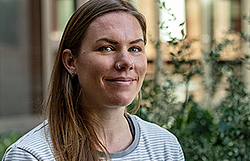iDiv newsletter March 2022 | Editors' choice
Linking changes in species composition and biomass in a globally distributed grassland experiment / Ecology Letters
by Emma Ladouceur (iDiv, UFZ)
Ladouceur, E., Blowes, S. A., Chase, J. M., Clark, A. T., Garbowski, M., Alberti, J., Arnillas, C. A., Bakker, J. D., Barrio, I. C., Bharath, S., Borer, E. T., Brudvig, L. A., Cadotte, M. W., Chen, Q., Collins, S. L., Dickman, C. R., Donohue, I., Du, G., Ebeling, A., Eisenhauer, N., Fay, P. A., Hagenah, N., Hautier, Y., Jentsch, A., Jónsdóttir, I. S., Komatsu, K., MacDougall, A., Martina, J. P., Moore, J. L., Morgan, J. W., Peri, P. L., Power, Sally A., Ren, Z., Risch, A. C., Roscher, C., Schuchardt, Max A., Seabloom, E. W., Stevens, C. J., Veen, G. F., Virtanen, R., Wardle, G. M., Wilfahrt, P. A., Harpole, W. S. (2022): Linking changes in species composition and biomass in a globally distributed grassland experiment. Ecology Letters, DOI: 10.1111/ele.14126
Anthropogenic disturbances linked to global change simultaneously alter biodiversity, species composition and ecosystem processes like aboveground biomass production. These processes can react to global change independently, and these independent changes can interact interdependently to affect one another. I originally came to iDiv as a postdoctoral researcher funded by a Flexpool project initiated by Jon Chase (iDiv, MLU), head of Biodiversity Synthesis, and Stan Harpole (UFZ, iDiv), head of Physiological Diversity, to help to understand and better link these interdependent processes.
These ideas built on work of a previous sDiv working group- sCAFE – Community Assembly and the Functioning of Ecosystems that took place before I became a part of iDiv. My position aimed to continue this line of research. During this time, I have valued my membership in both research groups, and have continued to maintain a relationship with both, despite my role at iDiv changing over time.
Nutrient pollution is an anthropogenic disturbance, contributing to global change, well-known to induce dramatic changes to plant biodiversity declines and aboveground biomass increases. These changes are underpinned by species extinction, colonisation and shifting relative abundance. The Nutrient Network (NutNet) is a globally distributed nutrient addition experiment that has been running for almost 15 years now, and the EU branch of this project is a strategic project of iDiv. iDiv hosts an experimental NutNet site at the UFZ research station in Bad Lauschstädt and in Jena. See our shiny app for site-level results from our synthesis.
Our studies revealt, that nutrient addition alters species and biomass turnover dynamics through time, altering how ecosystems function. Observed species richness decline comes from increasing species losses through time, but also reduced species gains. Species that don’t do well under these conditions are lost, and those that do, become dominant in biomass. Biomass gain in species that persist happens rapidly upon nutrient addition, and possibly contributes to species loss and reduced species gains through time through competition and light.
This study engaged many site managers and PIs involved in the Nutrient Network I had never worked directly with before both within iDiv and abroad in 59 sites on every continent except Antarctica. To realize our ideas, we needed interdisciplinary expertise including vegetation ecology, nutrient pollution, temporal biodiversity change, biodiversity synthesis, community assembly, ecosystem functioning, species turnover, quantitative tools, and multilevel modelling. We engaged four different groups at iDiv, at 4 different career stages to creatively approach better understanding these interrelated processes. I now consider these folks collaborators and mentors. This project expanded my global research network.
Without the valuable integrative and interdisciplinary expertise and support offered to me through the iDiv community, this work would not be what it has become today; an important contribution to understanding Community Assembly and the Functioning of Ecosystems. We hope our novel approach leading to these conclusions can be applied to address related questions across other systems and subdisciplines and we have aimed to make all materials open access and pedagogic to assist with that.
Contact: emma.ladouceur@idiv.de

